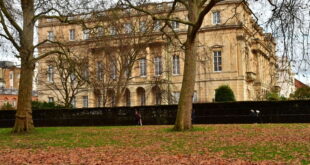It has been nicknamed Mordor’s Land. Less romantically, aficionados of the Camí de Cavalls, the coastal footpath that encircles the island of Menorca, know this northern section of the route as “the hard walk”.
While the steep gullies, jagged rock, and slippery shingle make the terrain difficult for those with weak knees, it does not take away from the natural beauty of this part, which is otherwise a very gentle Balearic. While the better-known, and more visited, south of Menorca has more placid landscapes, with wide beaches of white sand (some even with parasols for rent), here in the almost empty north-west the hills are covered with low scrub — holm oak, myrtle, thistle, the wild olives known as Ullastres. Its small bays are often only accessible by rocky paths or no roads.
Under a June sun that was already blazing, I went on an early morning swim to the beautiful, untouched bay of Cala En Calderer. It was one of the best swims I’ve ever had. The walk from Son Ermità, the just-opened hotel where I was staying, had been, I’ll admit, a challenge: 25 minutes to get down to the sea, and we’ll gloss over how long it took me to get back up the steep hillside. The previous day, kind hotel staff had shown the way in a magnificent and happily air-conditioned 4×4 — but even that vehicle wasn’t equal to the last bit.


On foot or otherwise, the views over largely untouched countryside, dotted only with a few white farmhouses, are ravishing — and the ruggedness makes the deep comforts of Son Ermità all the more welcome, once you’ve bumped along a couple of kilometres of unmade road to reach it (a very normal thing in Menorca, by the way). Converted from a large farmhouse, the property is perched on a hilltop with a ring surrounded by elegant palm trees. The view over the hills and coast gives you a feeling of freedom and possibilities.
The interiors of the 11 rooms are spacious, uncluttered and dotted with antique pieces, sympathetic contemporary art and a few selected antique pieces. Simple luxury is the watchword. The room I stayed in was spacious and light, with a high ceiling, beams, and small windows to protect the house from the fierce winter winds as well as the intense summer heat.
The hotel is the latest creation of the Madrid-based Vestige group, a family company created by Victor Madera, a doctor who built, then sold, Quirónsalud, Spain’s largest private hospital operator. A little like the UK’s Landmark Trust, albeit on a wildly more luxurious level, Vestige rescues old buildings and sympathetically converts them into holiday accommodation — in this case not cottages but hotels or private estates to rent.
The first Menorcan Hotel, Son Vell, was opened in Cuitadella in 2022. Five properties are currently receiving guests while 19 others are in the conversion process.
There are country houses and townhouses. The 18th century palacio next to the cathedral in Palma on Mallorca has been converted into a nine bedroom private rental. I also got a peek at a project still in its raw form, an abandoned grand house in Cuitadella that was covered in moths, had collapsed plasterwork and was waiting for the magic touch. The project would be enough to make anyone run away, but it’s hard not to be tempted by the high-domed window, the marble staircase up a triple height hallway, and the painted ceilings. Vestige Madrid now has 60 interior designers and architect, compared to just 3 or 4 in the last few years.


Back at Son Ermità, Marta Madera Fernandez, daughter of Madera and his wife Maria Obdulia Fernandez, laughingly describes her parents as “almost obsessional” on the subject of materials and historic conservation and conversion. “It could take years to find just a few beams,” she says.
There was more building work, in fact a hive of activity, under way at the second property on the same estate as Son Ermità. Tucked down into the valley rather than on the hilltop, Binidufà is due to open in August as another characterful 11-room hotel, in quite a different mood to its grander neighbour. The buildings being converted into bedrooms are surrounded by a smaller farmhouse, and each has its own private garden. The bathrooms, which are often as large as the bedrooms, have high ceilings, natural light, and polished plaster walls.


At both Son Ermità and Binidufà, every inch of the old buildings is put to use: a smallish former dairy with a low doorway will become a smart gym, for instance. Space is at a premium because Menorca’s planning restrictions are famously tight — it’s very rare for anything new to be built, and every conversion has to be confined within the footprint of a pre-1960 structure. This is why the north of the island is so empty. Even if developers were willing to risk the rough rocks, the lack of water and the harsher weather conditions (which I am sure they would), obtaining the necessary permissions is nearly impossible.

As José Molina, the group’s guest experience manager, told me with some pride, Menorcan public opinion has over the years seen off a range of development schemes they didn’t like the look of, so that new buildings over a couple of storeys, and any building at all on or around the “wild” beaches, are still mercifully rare. The environmental value of posidonia and seaweed is so great that it’s illegal to clean up a “wild” beach. Even if your five-star hotel is the height in luxury, it’s possible that your beach will be full of weeds. This is all part of the adventure.


Binidufà, as well as its swimming pool and bar-restaurant, are being given wide terraces stepping down the hillside, already planted with fruit trees. Vestige views gardens as an important part of the luxury lifestyle, in line with Spanish tradition.
While at Son Vell (where there is even a rose garden) the more formal gardens are already luxuriant, a real highlight of the place, at Son Ermità the planting is in its infancy. Water is carefully used and local plants that are drought resistant, like dozens ancient olive trees, have been selected to be able to survive until the winter rainfall. All over the place, new drystone walls are built in the old style to line the hillsides.


Victor Madera is a well-known Menorca resident. Those who know him will tell you he owns 10% of the island. That may well be an exaggeration, but looking out over the 800 hectares of the Son Ermità / Binidufà estate, it’s obvious that agriculture has also restarted, another branch of the conservation effort. The restoration of soils that have been eroded or degraded through chemical use is one priority. There are also lambs, local cows with a similar reddish hue to the earth and organic vegetables for the kitchens.
The restaurants use a lot of local produce, whether it is from Vestige or not. The waiter at Son Vell brought me a delicious Viognier wine that was produced just a few kilometres from the restaurant. (Also, I was blown away by a dessert called Cromatismo Verde. It consisted of an apple, fennel and lime slop with Chartreuse mousse.
At Son Ermità, I think my quest for the perfect gazpacho might have met its match. The chilled soup, which was a combination of tomato, strawberry, and watermelon, was perfect for a picnic lunch under the cool shade of Ullastres. Subtle, gorgeous.
Menorca has only recently seen the rise of luxury hotels, as it was always the less glamorous option in the Balearics. Even five years ago, none of these places would have existed — and Vestige is not the only hospitality company making the running.
These boutique hotel conversions are perfect for those looking for privacy. They may be the ultimate luxury. Buyouts — when a single client takes over an entire hotel — are already proving popular with large families, celebs, footballers and others who want to get lost in style. At Son Ermità, the sign on the gates doesn’t even announce its name: it simply says Privado.
Details
Jan Dalley visited Vestige as a guest (vestigecollection.com). Double rooms at Son Ermità The following are some examples of how to get started: Binidufà start from €635 per room per night in summer. €525 in autumn, including breakfast
Find out about our latest stories first — follow FT Weekend on Instagram, Bluesky and X, and sign up Receive the FT Weekend Newsletter every Saturday
 Costa News Spain Breaking News | English News in Spain.
Costa News Spain Breaking News | English News in Spain.





